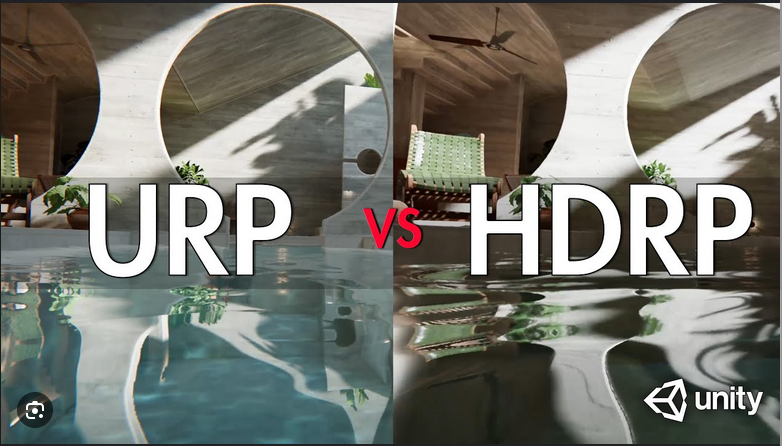Introduction
Unity’s commitment to delivering high-quality graphics experiences is evident in its rendering pipelines. The Universal Render Pipeline (URP) and the High Definition Render Pipeline (HDRP) are two advanced options that cater to diverse visual needs. In this blog post, we’ll explore the differences between URP and HDRP, helping you understand when to choose one over the other for your project.
Universal Render Pipeline (URP)
URP is designed to provide excellent graphics quality while maintaining performance across a wide range of platforms. It’s a versatile choice suitable for both 2D and 3D projects, and it aims to find the balance between visual fidelity and accessibility.
Advantages of URP:
- Performance: URP is optimized for performance and is well-suited for projects targeting a broad spectrum of devices, from mobile devices to PCs and consoles.
- Flexibility: URP’s flexible architecture allows developers to adjust rendering settings according to their project’s requirements. This adaptability makes it a good fit for a variety of art styles.
- Multi-Platform Support: With its focus on performance, URP is a great choice for projects that need to run smoothly across different platforms without compromising on visuals.
- 2D and 3D Support: URP caters to both 2D and 3D projects, making it a versatile option for developers working in different genres.
- Scriptable Render Pipeline (SRP) Batcher: URP leverages SRP Batcher to optimize draw calls, improving performance by reducing CPU overhead.
High Definition Render Pipeline (HDRP)
HDRP is Unity’s premier rendering pipeline designed to deliver top-tier visuals with cutting-edge graphical features. It’s tailored for projects that prioritize photorealism and advanced rendering techniques.
Advantages of HDRP:
- Visual Fidelity: HDRP is designed to create stunningly realistic visuals with advanced lighting, shading, and visual effects. It’s ideal for projects aiming for photorealism.
- Physically-Based Rendering (PBR): HDRP implements physically-based rendering techniques, resulting in more accurate lighting and materials, which enhances realism.
- Visual Effects: HDRP offers a wide range of visual effects options, including volumetric lighting, screen-space reflections, and advanced post-processing effects.
- High-End Platforms: If your project is targeting high-end devices and platforms, such as modern gaming consoles or powerful gaming PCs, HDRP can take full advantage of their capabilities.
- Shader Graph: Similar to URP, HDRP also supports Shader Graph, enabling artists and developers to create complex shaders without diving into intricate shader code.
Choosing the Right Pipeline
Choosing between URP and HDRP depends on your project’s specific requirements and goals:
- URP: Opt for URP if you’re aiming for a balance between performance and visuals, targeting a wide range of platforms, and working on projects with diverse art styles.
- HDRP: Choose HDRP if your project demands top-tier graphics, photorealism, and advanced visual effects. This pipeline is ideal for high-end platforms and projects with a focus on realism.
- Hybrid Approach: Keep in mind that Unity also allows you to mix and match features from URP and HDRP, creating a custom pipeline that suits your project’s needs.
Conclusion
URP and HDRP represent Unity’s commitment to catering to a wide variety of projects with different graphical requirements. The choice between URP and HDRP ultimately boils down to your project’s scope, target platforms, visual aspirations, and the level of resources and expertise available. Both pipelines empower developers to create visually striking games, whether they’re aiming for optimized performance or pushing the boundaries of realism.
